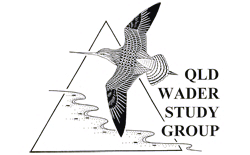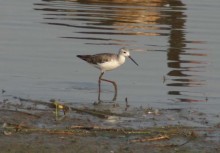Tringa stagnatilis
Subspecies
None.
Other Names
Little Greenshank, Marshy.
Identification
Medium sized, long-legged wader that is grey and white with a needle-like bill.
Plumage
Non-breeding: The top of the head is grey, with a neck streaked with black. The rest of the head and neck, except the chin and throat is streaked with grey. The back and wings are grey with white edges to the feathers. The underparts, from the chin through to the vent are white. The bill is black with a green base, and ‘classically’ termed as being needle-like. The legs are grey-green.
Breeding: The streaking is more heavily marked with dark grey, both on the head and neck as well as the back.
Juvenile: Similar to the non-breeding adult plumage, but is more marked because the feathers are dark grey with paler margins.
Distribution
Found throughout Australia. The largest numbers are to be found on the mudflats of northern Australia. It is found in many different areas and habitats of Australia. It inhabits inland salt water lakes, sewage works and along the wetlands of interior rivers as well as the usual coastal habitat.
Migratory habits
The Marsh Sandpiper leaves our shores in March and through April. They return to our shores during August and September.
Breeding
The Marsh Sandpiper breeds in a broad band that starts in eastern Europe and extends eastward through Russia to Mongolia and northern China
Status
Australian Status:
East Asian-Australasian Flyway Population: 90,000.
Confusing Species
Greenshank: This bird is slightly larger with a heavier, slightly upturned bill. In flight the legs do not trail far behind the tail.
Curlew Sandpiper: This bird has about the same body size as the Marsh Sandpiper and a similar plumage in non-breeding plumage so if the legs and bill are hidden it can appear the same as Marshie.

